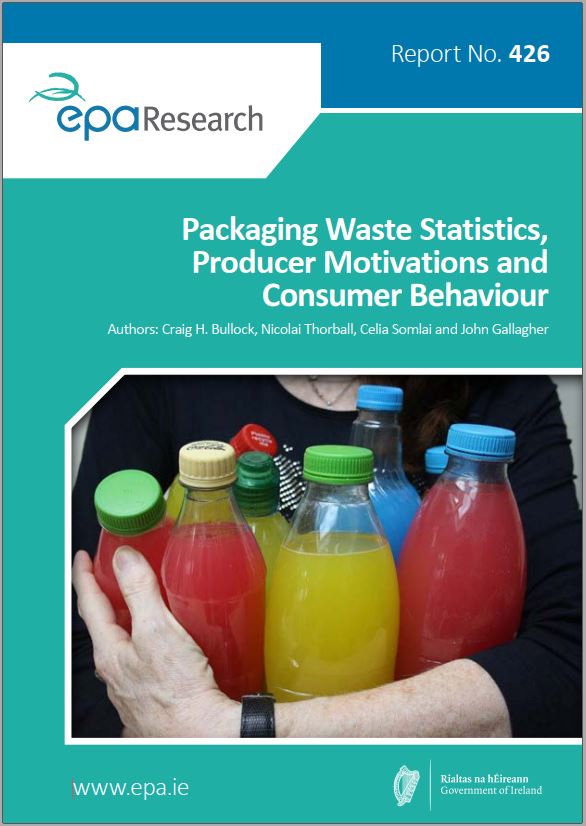Research 426: Packaging Waste Statistics, Producer Motivations and Consumer Behaviour
Authors: Craig H. Bullock, Nicolai Thorball, Celia Somlai and John Gallagher
Summary: The production of plastic packaging for food and other products has increased substantially over the past 50 years. The ReWrapped project investigated why Ireland’s production of plastic packaging waste appears to be higher than that of other EU Member States. The project also undertook a survey of producers to help understand what drives their use of different types of plastic and the extent to which sustainability considerations influence their decision-making.

Project Highlights
Watch the project highlights video
Identifying Pressures
The production of plastic packaging for food and other products has increased substantially over the past 50 years. Plastic packaging has many desirable properties: it is inexpensive, lightweight, mouldable and impervious to air and water, making it an excellent material for keeping food fresh and reducing food waste. Unfortunately, plastics are derived from fossil fuels and do not decompose easily, often accumulating in the environment as litter with significant environmental impacts for our oceans. Many types of plastic packaging are also challenging to recycle. Changes are needed if Europe is to achieve a circular economy that minimises waste and preserves resources. Ambitious targets for plastic recycling have been set at the EU level, but recycling rates in Ireland have stalled in recent years.
The ReWrapped project investigated why Ireland’s production of plastic packaging waste appears to be higher than that of other EU Member States. The project also undertook a survey of producers to help understand what drives their use of different types of plastic and the extent to which sustainability considerations influence their decision-making.
Informing Policy
The methodologies used by different EU Member States to compile waste statistics are examined, particularly the waste analysis approach used by Ireland and the placed-on-the-market approach used by most other Member States. Both approaches are subject to flaws due to sampling costs or varying national coverage or guidance, but under-reporting, online sales and differences in moisture content are among the main reasons why the placed-on-the-market approach often underestimates packaging waste quantities. On this basis, the per-capita plastic packaging waste generation in Ireland would appear to be higher than in many other countries, albeit not exceptionally so.
Responses from the producer survey indicated that many food producers use an increasingly wide variety of plastic packaging for reasons that range from maintaining freshness to marketing. Some of these packaging types are difficult to recycle. Many producers are now examining ways to make their packaging more recyclable or compostable. Producers are also conscious of new EU directives which will require packaging to be more recyclable and use recycled content. They expressed a need for more specific information and guidelines. Interestingly, much of the pressure regarding sustainability to date appears to have come from major retailers rather than government.
Developing Solutions
The project also surveyed consumers to discover their opinions about different types of packaging and sustainability labelling. The survey included an experiment to determine consumer preferences for recyclability, compostability and recycled content. It found that there is widespread awareness of recycling, and that consumers are willing to pay modest amounts more for sustainable packaging. However, current sustainability labelling creates confusion for consumers. There also appears to be low awareness among consumers of the virtue of recycled content.
Communication should be improved and awareness raised to maintain pressure on retailers and producers to improve packaging sustainability. Although a move to sustainable product packaging can be challenging, it is evident that producers often have the capacity to respond to market and policy pressures given relevant information, guidance and a mix of incentives and penalties, as well as sufficient lead time. Regular data from waste composition analysis can inform this process, but more consistent and harmonised reporting methods need to be implemented that combine waste-based and placed-on-the-market data.
https://www.epa.ie/media/epa-2020/research/epa-funded-research/Report-cover-426.jpg